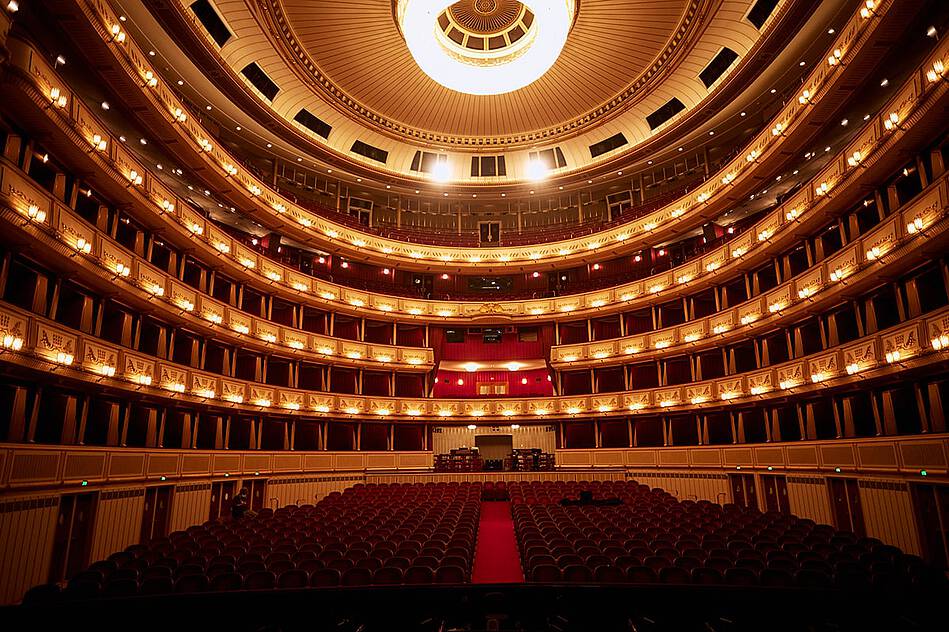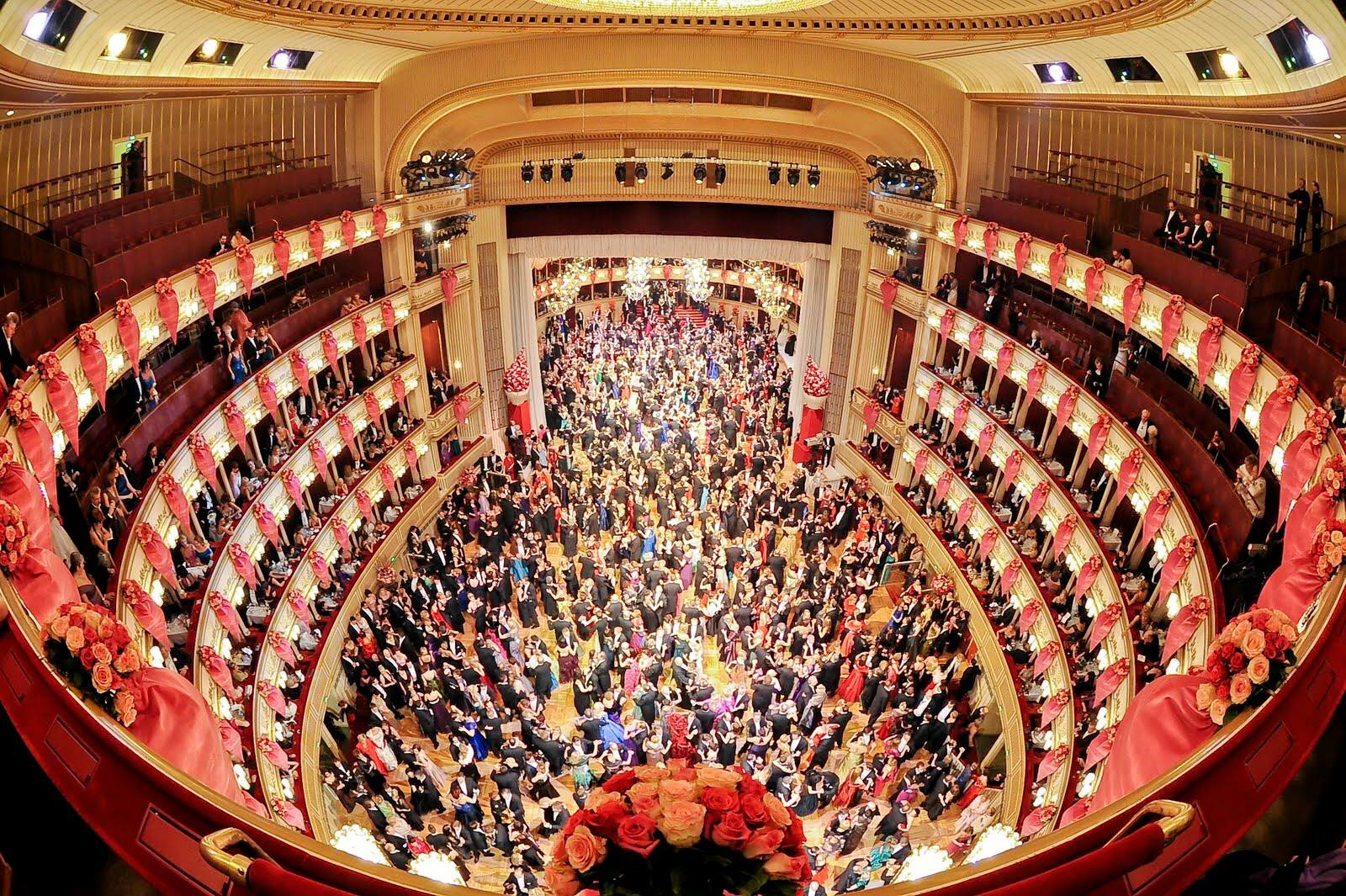Exploring Austria’s Iconic Opera Houses
Jan 15, 2025 | By Piz za
Austria, a nation steeped in a rich cultural heritage, stands as a beacon of classical music and artistic excellence. Among its most revered cultural institutions are its opera houses, which serve as both architectural marvels and stages for world-class performances. This report delves into the history, architecture, notable performances, and cultural significance of Austria’s iconic opera houses, with a particular focus on the Vienna State Opera and the Großes Festspielhaus in Salzburg.
Vienna State Opera: A Symbol of Artistic Prowess

The Vienna State Opera, known locally as the Wiener Staatsoper, is perhaps the most illustrious opera house in Austria and one of the most famous in the world. Situated in Vienna, the cultural capital of Europe, the opera house is a testament to the city’s longstanding tradition of musical excellence (Travel Right). The Vienna State Opera opened its doors in 1869 with a performance of Mozart’s “Don Giovanni,” and since then, it has been a cornerstone of Vienna’s artistic landscape (Visiting Vienna).
Architectural Grandeur

The Vienna State Opera is renowned for its opulent architecture, which reflects the grandeur of Austria’s imperial past. Designed by architects August Sicard von Sicardsburg and Eduard van der Nüll, the building is an exemplar of Neo-Renaissance style. The main auditorium is a sight to behold, with plush red velvet seats and a magnificent chandelier that illuminates the space (Awesome Vienna). The opera house’s location on Vienna’s Ringstrasse boulevard further enhances its architectural splendor, making it a must-visit for both art and history enthusiasts (Visiting Vienna).
Notable Performances and Cultural Impact

The Vienna State Opera hosts over 350 performances annually, featuring a diverse repertoire that includes both classical and contemporary works. This institution has been graced by the presence of legendary conductors and performers, such as Gustav Mahler and Maria Callas, cementing its status as a global cultural landmark (Explorial). The opera house is not only a venue for performances but also a symbol of Austria’s vibrant cultural life, representing the nation’s deep-rooted appreciation for the arts (Mundo Wanderlust).
Großes Festspielhaus: Salzburg’s Musical Gem
While the Vienna State Opera often takes the spotlight, the Großes Festspielhaus in Salzburg is another iconic Austrian opera house that deserves recognition. Built into the Mönchberg mountain, this concert hall is a modern architectural wonder that complements Salzburg’s historic charm (TripAdvisor).
Architectural and Acoustic Excellence

Opened in 1960, the Großes Festspielhaus boasts one of the widest stages in the world, measuring 100 meters. Its auditorium, which seats 2,179 people, is designed to provide impeccable acoustics, ensuring that every performance resonates with clarity and precision. The square design of the auditorium enhances the audience’s experience, making it a favored venue for the Salzburg Festival, one of the most prestigious music festivals globally (TripAdvisor).
Cultural Significance

The Großes Festspielhaus is integral to Salzburg’s cultural identity, hosting a variety of performances that range from opera to orchestral concerts. It plays a pivotal role in the Salzburg Festival, attracting music lovers from around the world to experience the finest in classical music and opera. The festival, and by extension the Großes Festspielhaus, contributes significantly to Austria’s cultural tourism, drawing visitors who seek to immerse themselves in the nation’s musical heritage (TripAdvisor).
Notable Tourist Attractions Related to Austria’s Opera Heritage
Austria’s opera houses are complemented by an array of surrounding attractions that further highlight the nation’s deep connection to music and culture. Here are some must-visit locations to enhance your experience:
1. Vienna Musikverein (Vienna)
Known for hosting the annual New Year’s Concert, this venue is a paradise for music lovers and is often considered one of the best concert halls in the world.
2. Mozarthaus Vienna (Vienna)
Step into the life of Wolfgang Amadeus Mozart at his former residence, where you can explore exhibits about his life and works.
3. Salzburg Cathedral (Salzburg)
Located near the Großes Festspielhaus, this historic cathedral is a stunning architectural site where Mozart was baptized.
4. Mirabell Palace and Gardens (Salzburg)
Famous for its scenes in The Sound of Music, this picturesque location offers a tranquil retreat within Salzburg’s bustling cultural scene.
5. Hofburg Palace (Vienna)
While not directly linked to opera, this historic complex captures the grandeur of Vienna’s imperial past and is home to the Spanish Riding School, showcasing equestrian artistry.
These attractions, intertwined with Austria’s operatic heritage, create a rich tapestry of history, music, and culture. Whether you’re exploring Mozart’s legacy or marveling at world-class performances, Austria promises an unforgettable journey through its artistic soul.
Conclusion
Austria’s opera houses, particularly the Vienna State Opera and the Großes Festspielhaus, are not merely venues for musical performances; they are cultural institutions that embody the nation’s artistic spirit. The Vienna State Opera, with its historical significance and architectural grandeur, continues to be a symbol of Vienna’s cultural capital status. Meanwhile, the Großes Festspielhaus in Salzburg complements this legacy with its modern design and contribution to the Salzburg Festival, reinforcing Austria’s standing as a global center for classical music and opera. These opera houses are indispensable to understanding Austria’s cultural landscape, offering audiences an unparalleled experience of artistic excellence.
Related Blogs

India vs New Zealand: A Traveler’s Perspective on Two Unique Destinations
India vs New Zealand are two destinations that offer contrasting yet equally mesmerizing experiences. India vs New Zealand comparisons often highlight India’s centuries-old traditions, bustling bazaars, and architectural marvels versus New Zealand’s breathtaking natural landscapes and adrenaline-pumping adventures. Whether you’re a culture enthusiast, nature lover, or thrill-seeker, this guide will help you explore the best […]

Barbastro Barcelona: A Journey Through Spain’s Hidden Gems
Spain is a treasure trove of culture, history, and breathtaking landscapes. Two destinations that encapsulate the country’s charm are Barbastro Barcelona. While Barcelona is renowned for its vibrant city life and iconic architecture, Barbastro offers a quieter, more traditional Spanish experience nestled in the heart of the Somontano wine region. Together, they create the perfect […]

The Complete Guide to the Carry On Cast: Past, Present, and Future
The Carry On films stand as a cornerstone of British cinema, delivering decades of laughter and unforgettable characters. This iconic comedy franchise, spanning over 30 years, combined slapstick humor, clever wordplay, and a talented ensemble cast that became household names. This guide explores the history of the Carry On cast, their contributions to the franchise, […]

Exploring Austria’s Iconic Opera Houses
Austria, a nation steeped in a rich cultural heritage, stands as a beacon of classical music and artistic excellence. Among its most revered cultural institutions are its opera houses, which serve as both architectural marvels and stages for world-class performances. This report delves into the history, architecture, notable performances, and cultural significance of Austria’s iconic […]

Exploring the Distinctive Andean Music of Bolivia
The Andean music of Bolivia is a vibrant and integral part of the country’s cultural tapestry, deeply rooted in the traditions and spiritual practices of the Andean peoples. This genre of music is not only a form of artistic expression but also a medium through which the stories, legends, and historical narratives of the Aymara […]

Learning About the Carnival Culture in Rio de Janeiro, Brazil
The Rio de Janeiro Carnival, often heralded as the world’s largest and most famous carnival celebration, is a vibrant showcase of Brazilian culture, history, and community spirit. This annual event, which draws millions of participants and spectators from around the globe, is a testament to Brazil’s rich cultural heritage and its capacity for joyous celebration. […]

Mastering Mozzarella: A Taste of Italy
Mozzarella, a semi-soft cheese originating from Italy, is cherished for its creamy texture and mild flavor. Traditionally crafted from buffalo milk, it also finds a popular variant made from cow’s milk. This cheese is not just a culinary staple but a cultural icon, deeply embedded in Italian society and cuisine. Its high moisture content contributes […]

Discovering the Art of Calligraphy in South Korea
Korean calligraphy, known as “Seoye” (서예), stands as a testament to the rich cultural heritage and artistic expression of Korea. This ancient art form, which involves the artistic writing of both Hanja (Chinese logographs) and Hangul (the Korean native alphabet), transcends mere communication to become a profound medium of aesthetic and spiritual expression. As we […]

Scotland’s Tartan: A History of Highland Dress
Tartan, with its vibrant patterns and historical richness, is one of Scotland’s most iconic symbols. It is inextricably linked to the kilt and the national dress of Scotland, embodying both cultural heritage and identity. This detailed report delves into the origins, evolution, and cultural significance of tartan and Highland dress, exploring how this textile has […]

Tribal Arts of Papua New Guinea: A Unique Heritage
Papua New Guinea (PNG) is a nation marked by its remarkable cultural diversity, with over 800 distinct tribes, each possessing its own language and customs. This diversity is vividly expressed through the tribal arts, which are not only a testament to the rich heritage of the indigenous people but also serve as a living tapestry […]

